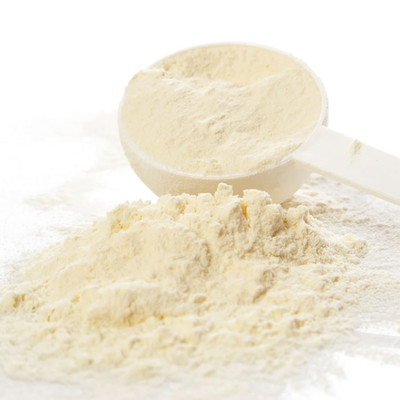Whey Protein: The Ultimate Guide
What is Whey Protein?

Whey protein is a mixture of proteins isolated from whey. This is the liquid part of milk that separates during cheese production. Milk contains two main types of protein: casein (80%) and whey (20%). In the watery portion of milk, whey is present. When cheese is produced, the fatty components of the milk coagulate, and as a byproduct, whey becomes separated from them. If you want to see whey in its liquid form, open a container of yogurt and you will typically see liquid floating at the top. This is whey. Cheese makers would actually discard this liquid whey before its commercial value was discovered. Now, whey protein is all the rage.
How Does Whey Become Whey Protein?
The separation process of cheese production gives us whey. Now, whey goes through processing steps to become what we recognize as whey powder. The problem with whey in this powdered form is that pure whey powder is not tasty on its own. For that reason, we see protein powders in all various types of flavors from chocolate, vanilla, to many more exotic flavors. It is surprising how specific some of these protein powder flavors are. You can use whey protein powder for protein shakes, protein bars, meal replacements, baking, and more once in powder form.
Essential Amino Acids in Whey
An incredible range of essential amino acids is present in whey, and your body absorbs them rapidly. Read the 2003 study from The Journal of Nutritional Biochemistry to find out more about how fast the absorption of amino acids is.
How Many Grams of Protein Are in Whey Protein?
A typical whey powder contains 20-30 grams of protein per serving. Compared to the protein content in each serving, most whey protein powders contain a relatively low number of calories. Of course, this is without extra additives such as sugars. Using the better types of protein powders without added sugars is a great way to ingest 50 grams of quality protein very quickly.
Types of Protein in Milk?
Two proteins, casein (80%) and whey (20%), constitute milk. Separating whey from casein in milk or generating it as a cheese-making by-product are possible processes. Whey qualifies as a complete protein, containing all 9 essential amino acids. Also, whey is low in lactose content.
Fast Facts on Whey
- Whey is a mixture of beta-lactoglobulin, alpha lactalbumin, bovine serum albumin, and immunoglobins.
- Possible benefits include weight loss and lowering cholesterol (A study, published in The British Journal of Nutrition, gave whey supplements to 70 overweight men and women for 12 weeks and measured a number of parameters, such as lipid and insulin levels. They found that “there was a significant decrease in total cholesterol and LDL cholesterol at week 12 in the whey group compared with the casein (group).”).
- Possible dangers encompass nausea and headaches, but whey protein is not considered dangerous at moderate doses.
Benefits of Whey Protein
The consumption of whey offers numerous associated benefits. Researchers are constantly finding new possible therapeutic properties.
People commonly use whey as supplementation, alongside resistance exercise, to help improve muscle protein synthesis and promote the growth of lean muscle mass.
Side Effects of Whey
Whey does not typically cause any adverse events. However, consuming very high doses can cause:
- stomach pains
- cramps
- reduced appetite
- nausea
- headache
- fatigue
Proteins are the building blocks of the contractile elements in your muscles. Cells in your body assemble them from amino acids, smaller molecules linked together like beads on a string. Your body’s cells produce some amino acids, while the food you eat supplies others. The best proteins are those that provide all nine essential amino acids, and whey abounds in them. Whey, in particular, boasts high levels of crucial branched-chain amino acids (BCAAs) such as leucine, and it also possesses a substantial cysteine content.
Types of Whey: Concentrate vs. Isolate vs. Hydrolysate
There are several popular types of whey protein. And, their main difference is in the way they are processed.
Concentrate – Whey Concentrate: About 70–80% protein; contains some lactose (milk sugar) and fat and has the best flavor.
Isolate – Whey Isolate: 90% protein, or higher; contains less lactose and fat and lacks a lot of the beneficial nutrients found in whey concentrate.
Hydrolysate – Whey Hydrolysate: Also known as hydrolyzed whey, this type has been pre-digested so that it gets absorbed faster. It causes a 28–43% greater spike in insulin levels than isolate.
Whey concentrate is the cheapest variation and retains most of the beneficial nutrients found naturally in whey. Many people also prefer the taste, which is probably due to the lactose and fat.
If you have problems tolerating concentrate, or you are trying to emphasize protein while keeping carbs and fat low, whey isolate, or even hydrolysate, may be a better option.
Read the review of MusclePharm Combat 100% Whey and Optimum Nutrition 100% Gold Standard Whey. If you are looking for protein recipes, check out our Whey Mug Cake recipe, our Oats & Honey Protein Bar recipe, or our Chocolate Coffee Protein Shake recipe.



One Response